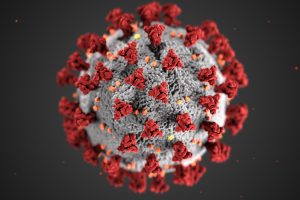The French government on April 26 said it had concluded that the April 4 attack against civilians in the Syrian city of Khan Sheikhun involved the use of a highly lethal neurotoxic agent.
The document, based on declassified intelligence, asserted “France … independently and categorically confirms that sarin was used on 4 April.”
Based on this overall evaluation and on reliable and consistent intelligence collected by our Services, France assesses that the Syrian armed forces and security services perpetuated a chemical attack using sarin against civilians in Khan Sheikhoun on 4 April 2017.
Declassified French intelligence report
Samples collected from one of the impact sites in Khan Sheikhun revealed the presence of sarin, specifically a secondary product called diisopropyl methylphosphonate (DIMP) formed during the synthesis of sarin from isopropanol and methylphosphonyl diflouride (DF), and hexamine.
Blood samples obtained from victims on the day of the attack, as well as symptoms observed in its immediate aftermath, also led analysts to conclude they were exposed to sarin.
“The use of sarin is without question. The responsibility of the Syrian regime is also without question.” @jeanmarcayrault #Syria
— France Diplomacy🇫🇷 (@francediplo_EN) April 26, 2017
France’s conclusions support those of the Turkish, UK and US governments as well as the Director-General of the Organisation for the Prohibition of Chemical Weapons, who said on April 19 that autopsies of the victims of the Khan Sheikhun attack showed the presence of sarin or a sarin-like substance.
Biomedical samples taken from seven living people also revealed a sarin or sarin-like substance, OPCW Director-General Ahmet Üzümcü said at the time.
Assad to blame
French intelligence assesses that only Syrian President Bashar al-Assad “and a few of the most influential members of his inner circle are authorized to give the order to use chemical weapons.”
France is making it official: The Assad regime used Sarin against its own population. Thread: https://t.co/8IWQ62ypiT
— Wüstenfuxx 🇩🇪🇪🇺 (@ArtWendeley) April 26, 2017
Furthermore, France assesses that the idea of rebels or terrorist groups being responsible for the April 4 attack is not credible. The report said France had no information confirming any of those groups were in possession of sarin.
The theory of a staged attack or “manipulation by the opposition” is also not credible, France said, particularly because of the number of victims who immediately fled for hospitals in Turkey and Syria, as well as “the simultaneous, massive uploading of videos showing the symptoms of the use of neurotoxic agents.”
Assad has denied using chemical weapons and said the April 4 attack reports were fabricated. Speaking to Agence France-Presse on April 13, he said it was “not clear whether it happened or not, because how can you verify a video? We have a lot of fake videos now.”
We don’t have any chemical weapons, we gave up our arsenal a few years ago. Even if we have them, we wouldn’t use them and we have never used our chemical arsenal in our history.
Syrian President Bashar al-Assad, AFP interview, April 13, 2017
In an April 21 interview with Sputnik, Assad alleged the chemical attack was a “false flag” and excuse for US President Donald J. Trump to order a missile strike on the Shayrat airfield near Homs.
Syrian-developed manufacturing process
France said its intelligence services had determined the Syrian armed forces and security services use a specific process to synthezise sarin that involves hexamine as a stabilizer. DIMP is a known byproduct of the process developed by Syria’s Scientific Studies and Research Centre, the document said.
The intelligence used to determine the process is based on the analysis of an unexploded grenade used in the April 29, 2013 attack in the city of Saraqib, which has been attributed to the Syrian government. Samples from that attack were confirmed by the UN to contain sarin.
Furthermore, the chemical compounds detected in the Khan Sheikhun sample matches those in the Saraqib sample. France concluded that the sarin present in the April 2017 attack was created by the same process as the sarin used in the April 2013 attack.
Chemical weapons declarations
France said it informed the OPCW that Syria’s explanations for discrepancies in chemical holdings – that they were lost or had been used in tests – were exaggerated.
Furthermore, France said it had observed multiple attempts by the Syrians to acquire dozens of tons of isopropanol.
Some nuggets from the #FrenchSarinReport – Ongoing Syrian attempts to buy Sarin precursors. pic.twitter.com/vapnXuTAz7
— Dan Kaszeta (@DanKaszeta) April 26, 2017
“The Declaration Assessment Team (DAT) from the Secretariat of the OPCW has been unable to obtain any proof of the veracity of Syria’s declarations,” the report concluded.
On the basis of the conclusions of the DAT and its own intelligence, France assesses that major doubts remain as to the accuracy, exhaustiveness and sincerity of the decommissioning of Syria’s chemical weapons arsenal.
Declassified French intelligence report
France noted that the OPCW has also identified major inconsistencies in Syria’s explanations for the presence of sarin derivatives at several sites where there was no declared sarin activity.
Specifically, France assesses that Syria has maintained the ability to both produce and stock sarin despite its claim to have destroyed all stocks and capacities.




